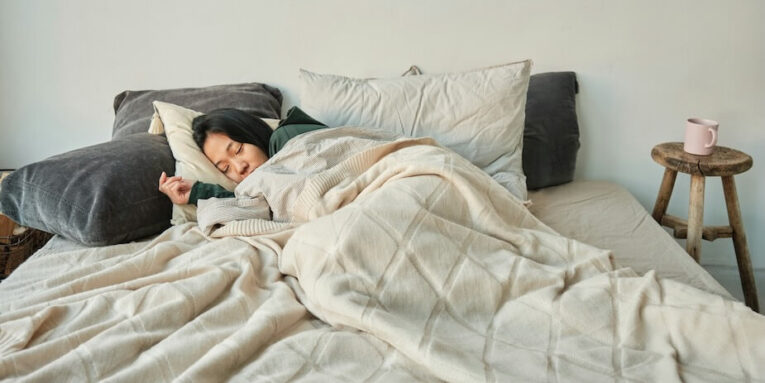Sleep apnoea is a common yet often overlooked condition that affects the quality of rest and overall wellbeing. Characterised by repeated pauses in breathing during sleep, it can lead to daytime fatigue, irritability, and more serious health concerns if left untreated. While treatments like CPAP therapy are common, your sleeping position can also make a significant difference in managing symptoms. Using the right posture and supportive products, such as a specialised sleep apnea pillow for side sleepers, can help improve airflow and reduce snoring, leading to a more restful night’s sleep.

The Best Position: Sleeping on Your Side
Sleeping on your side, particularly the left side, is widely regarded as the best position for people with sleep apnoea. This posture helps to keep the airways open by preventing the tongue and soft tissues from collapsing into the throat. It also supports better circulation and digestion.
For those using CPAP machines, side sleeping can make mask placement more comfortable and effective. Pairing this position with a contoured pillow designed to reduce pressure on the face and neck can make a noticeable difference in comfort and breathing quality.
Avoid Sleeping on Your Back
Sleeping on your back, also known as the supine position, can worsen sleep apnoea symptoms. Gravity causes the tongue and soft palate to fall backward, narrowing the airway and increasing the likelihood of snoring or apnoea events. If you naturally roll onto your back during the night, try positional therapy—this might include wearing a special device or using body pillows to encourage side sleeping.
Slightly Elevated Sleeping Position
Some people find relief by elevating the head of their bed slightly, around 10–15 centimetres. This angle helps reduce airway collapse and prevents acid reflux, which can further interrupt sleep. Adjustable bases or wedge pillows are effective solutions for achieving this gentle incline.
The Stomach Sleeping Option
Although not commonly recommended for everyone, stomach sleeping can sometimes benefit mild cases of obstructive sleep apnoea by helping to keep the airway open. However, it can strain the neck and spine if not properly supported. If you choose this position, ensure your pillow is low-profile and supportive enough to maintain spinal alignment.
Pairing Position with Lifestyle Changes
Your sleeping position is only one part of managing sleep apnoea. Maintaining a healthy weight, avoiding alcohol before bed, and creating a calm, consistent bedtime routine can all help improve sleep quality. Combined with positional adjustments and the right bedding support, these strategies can greatly enhance breathing patterns overnight.
Choosing the right sleeping position can be a simple yet effective way to reduce the severity of sleep apnoea symptoms
Side sleeping, in particular, offers the most benefits for maintaining an open airway and improving rest. If you experience frequent snoring or interrupted sleep, consider experimenting with supportive tools like a purpose-designed sleep apnea pillow for side sleepers to help create an optimal sleeping environment.
People also read this: Success Mentality with Vlada Galan

